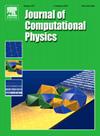Leveraging interpolation models and error bounds for verifiable scientific machine learning
IF 3.8
2区 物理与天体物理
Q2 COMPUTER SCIENCE, INTERDISCIPLINARY APPLICATIONS
引用次数: 0
Abstract
Effective verification and validation techniques for modern scientific machine learning workflows are challenging to devise. Statistical methods are abundant and easily deployed, but often rely on speculative assumptions about the data and methods involved. Error bounds for classical interpolation techniques can provide mathematically rigorous estimates of accuracy, but often are difficult or impractical to determine computationally. In this work, we present a best-of-both-worlds approach to verifiable scientific machine learning by demonstrating that (1) multiple standard interpolation techniques have informative error bounds that can be computed or estimated efficiently; (2) comparative performance among distinct interpolants can aid in validation goals; (3) deploying interpolation methods on latent spaces generated by deep learning techniques enables some interpretability for black-box models. We present a detailed case study of our approach for predicting lift-drag ratios from airfoil images. Code developed for this work is available in a public Github repository.
求助全文
约1分钟内获得全文
求助全文
来源期刊

Journal of Computational Physics
物理-计算机:跨学科应用
CiteScore
7.60
自引率
14.60%
发文量
763
审稿时长
5.8 months
期刊介绍:
Journal of Computational Physics thoroughly treats the computational aspects of physical problems, presenting techniques for the numerical solution of mathematical equations arising in all areas of physics. The journal seeks to emphasize methods that cross disciplinary boundaries.
The Journal of Computational Physics also publishes short notes of 4 pages or less (including figures, tables, and references but excluding title pages). Letters to the Editor commenting on articles already published in this Journal will also be considered. Neither notes nor letters should have an abstract.
 求助内容:
求助内容: 应助结果提醒方式:
应助结果提醒方式:


